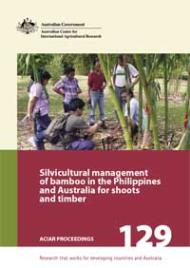Midmore champions trade and 'eco' potential of bamboo
Published on 17 April, 2009
CQUniversity's Professor David Midmore has produced one of the first major publications showing how well-managed bamboo plantations can have massive trade potential, as well as ecological benefits.
The new book introduces the reader to bamboo in the global context and includes proceedings of a bamboo symposium held in the Philippines.

This milestone has led to an invite for Professor Midmore to present at the 8th World Bamboo Congress in Thailand in September.
Bamboo is often thought of as a 'poor-person's crop', but estimates suggest it may have an annual international trade value of up to US$7 billion.
That is according to the Australian Centre for International Agricultural Research website, announcing publication of 'Silvicultural management of bamboo in the Philippines and Australia for shoots and timber'."Being perennial and providing both a vegetable commodity and wood substitute, bamboo has great advantages, for it combines desirable ecosystem services (such as wastewater treatment) and sustainable incomes," the web promotion says.
More details are available at this LINK
Professor Midmore is Director of CQUniversity's Centre for Plant and Water Science.
He says bamboo is one of the species fitting the goal, at the national and international levels, to introduce or reintroduce perennial species into cropping and ‘at-risk' lands.
This would capitalise upon its ability to contain soil and water erosion, to protect soil carbon reserves and to sequester atmospheric carbon dioxide.

